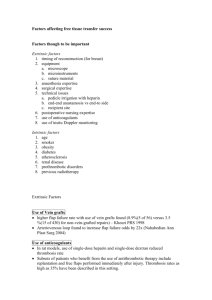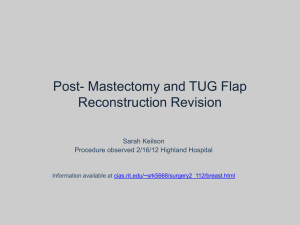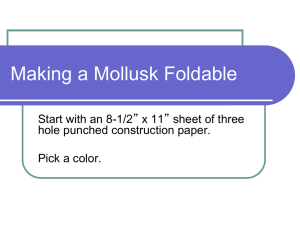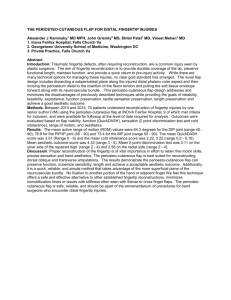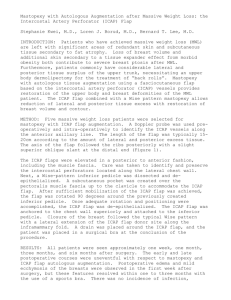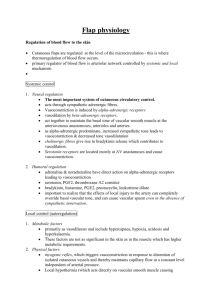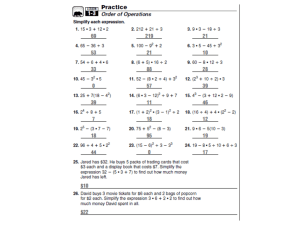Superiorly pedicled mastopexy with inferior
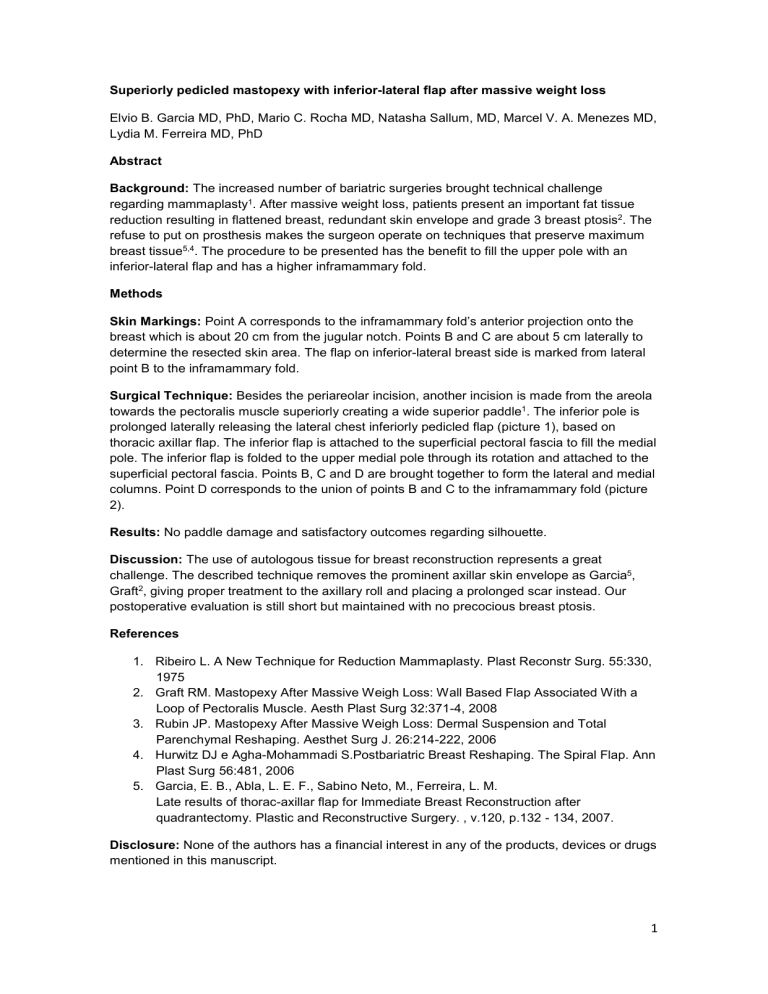
Superiorly pedicled mastopexy with inferior-lateral flap after massive weight loss
Elvio B. Garcia MD, PhD, Mario C. Rocha MD, Natasha Sallum, MD, Marcel V. A. Menezes MD,
Lydia M. Ferreira MD, PhD
Abstract
Background: The increased number of bariatric surgeries brought technical challenge regarding mammaplasty 1 . After massive weight loss, patients present an important fat tissue reduction resulting in flattened breast, redundant skin envelope and grade 3 breast ptosis 2 . The refuse to put on prosthesis makes the surgeon operate on techniques that preserve maximum breast tissue 5,4 . The procedure to be presented has the benefit to fill the upper pole with an inferior-lateral flap and has a higher inframammary fold.
Methods
Skin Markings: Point A corresponds to the inframammary fold ’s anterior projection onto the breast which is about 20 cm from the jugular notch. Points B and C are about 5 cm laterally to determine the resected skin area. The flap on inferior-lateral breast side is marked from lateral point B to the inframammary fold.
Surgical Technique: Besides the periareolar incision, another incision is made from the areola towards the pectoralis muscle superiorly creating a wide superior paddle 1 . The inferior pole is prolonged laterally releasing the lateral chest inferiorly pedicled flap (picture 1), based on thoracic axillar flap. The inferior flap is attached to the superficial pectoral fascia to fill the medial pole. The inferior flap is folded to the upper medial pole through its rotation and attached to the superficial pectoral fascia. Points B, C and D are brought together to form the lateral and medial columns. Point D corresponds to the union of points B and C to the inframammary fold (picture
2).
Results: No paddle damage and satisfactory outcomes regarding silhouette.
Discussion: The use of autologous tissue for breast reconstruction represents a great challenge. The described technique removes the prominent axillar skin envelope as Garcia 5 ,
Graft 2 , giving proper treatment to the axillary roll and placing a prolonged scar instead.
Our postoperative evaluation is still short but maintained with no precocious breast ptosis.
References
1. Ribeiro L. A New Technique for Reduction Mammaplasty. Plast Reconstr Surg. 55:330,
1975
2. Graft RM. Mastopexy After Massive Weigh Loss: Wall Based Flap Associated With a
Loop of Pectoralis Muscle. Aesth Plast Surg 32:371-4, 2008
3. Rubin JP. Mastopexy After Massive Weigh Loss: Dermal Suspension and Total
Parenchymal Reshaping. Aesthet Surg J. 26:214-222, 2006
4. Hurwitz DJ e Agha-Mohammadi S.Postbariatric Breast Reshaping. The Spiral Flap. Ann
Plast Surg 56:481, 2006
5. Garcia, E. B., Abla, L. E. F., Sabino Neto, M., Ferreira, L. M.
Late results of thorac-axillar flap for Immediate Breast Reconstruction after quadrantectomy. Plastic and Reconstructive Surgery. , v.120, p.132 - 134, 2007.
Disclosure: None of the authors has a financial interest in any of the products, devices or drugs mentioned in this manuscript.
1
Picture 1: Initial aspect after the inferior flap and the lateral flap are released, both pedicled inferiorly.
Picture 2: Final result with a T scar.
2



